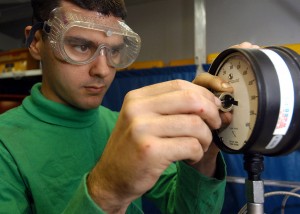For a smooth work flow in factories, it is important that their instruments are working perfectly at all times. If these instruments are not accurate, not only the processes but also the decisions made based on these instruments will not be helpful for the company. This makes it imperative that these instruments are taken care of. There are numerous kinds of instruments being used in a company among which pressure instruments are one of the most commonly used.

What are Pressure Instrument?
Many industries need to measure pressure and vacuum. For that reason they have to use instruments that are known as pressure instruments. They are now commonly known as pressure gauge or a vacuum gauge.
How to Calibrate the Pressure Instruments
Calibrating the pressure instruments is not easy. It is an intricate task with huge responsibility since making a wrong choice may result in bad decisions and uncertainty. Gathered here are three basic preliminary steps that should be taken to ensure they are properly calibrated.
1) You will first have to compare the faulty or questionable instrument with something else. To do so you will need a properly working instrument. Once you have acquired both instruments it is time to measure pressure. Record the results properly on a piece of paper.
2) Once you have recorded your readings, cross check them. Remember to note down various readings to rid your calibration process of any questions or doubt.
3) Some pressure instruments have dials that allow you to calibrate. If the questionable instrument has one, then use it and if it doesn’t, it is okay. The idea is to align the readings which should be the same with or without a dial.
4) If there is a huge difference between the instruments, dispose of the instrument if it doesn’t has a dial. If it does, then just change the dial it to ensure certain and accurate readings. Never force a dial to change its readings as you may break it. Try making notes like for instance writing “reads 7psi short” on the instruments to help others.
Use a Calibration Service
The above process seems mundane and easy to follow. But when the stakes are high and companies are involved it cannot be taken lightly. Some pressure instruments are incredibly precious which means you have to create a process and labs to fix them.
There are now numerous labs that are offering calibration services to factories and companies where expensive and complex instruments are being used. These instruments require baby gloves since they are imperative in the manufacturing process of the company.
Choosing a calibration service therefore is a task that requires care and consideration. You will have to trust not only your instincts but follow some steps like visiting the lab facilities before entrusting them with your equipment, checking their protocols and their certifications etc.
Three things to keep in mind when Calibrating Pressure Instruments
There are three fundamental things that you need to remember should you calibrate your pressure instruments yourself. Generically all calibration processes have these three things in common. These include
1) Span
2) Zero Point
3) Linearity
Span
The full scale point in a pressure instrument is known span of the instrument. To fix this you will need to adjust the tail found on the instrument meter.
Zero Point
All pressure instruments are made in such a manner that they allow the users to read from minimum to maximum value. Sometimes the zero error shows up. This refers to the situation where the needle on the measurement meter is not resting on zero. This can be fixed by simply adjusting the front panel screw.
Linearity
If the zero point and span are both accurate then the instrument is said to have linearity. Linearity can be tested through myriad of points on the scale. Remember that span and linearity are said to be interactive so linearity will have to be tested many times before it can be stated so.
In any industry accuracy and efficiency is imperative. If the decisions are made based on lack of information, it will only lead to bad outcomes that will result in losses. Therefore one of the major ingredients of success is to focus on your machinery and equipment. Calibration is imperative for your pressure instrument’s usefulness therefore don’t over look it.

